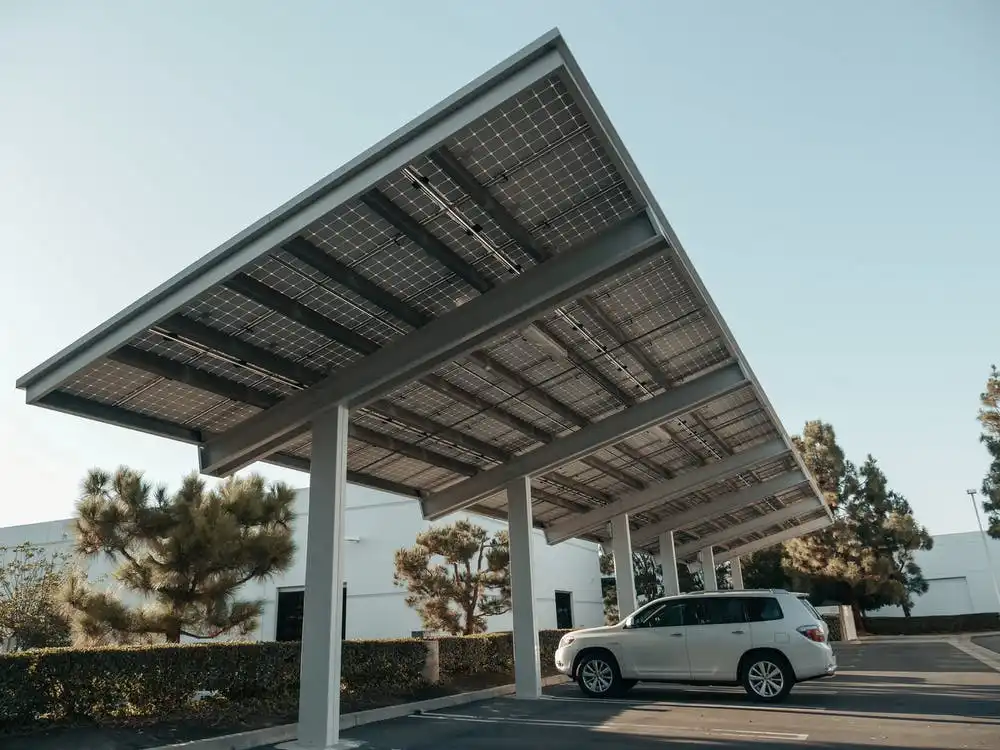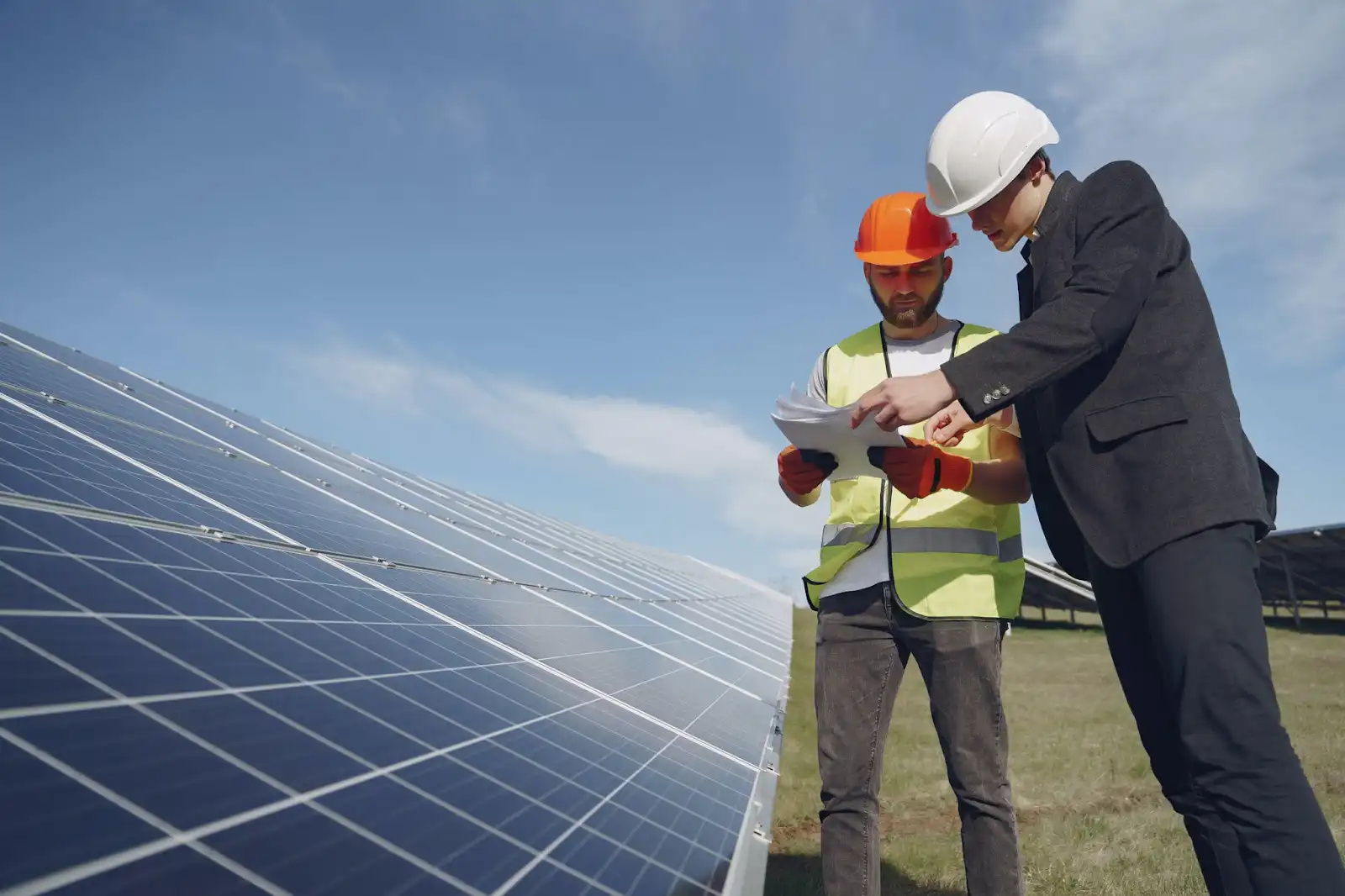There’s no question that making the switch to solar energy has massive benefits, from reducing your carbon footprint to saving money on your electric bill. However, choosing which mounting system is right for you can quickly become overwhelming with all the decisions you’ll need to make, just a few of which include panel size, mounting solutions with solar panels on the roof vs. ground, and solar array placement.
We’ll help you make an informed decision by discussing in detail the differences between solar panels on the roof or ground, the costs, benefits, solar installation methods, and downsides.
|
Book Your Free On-Site Assessment Today Find out what’s the best place to install your solar system (and how large it should be)
|
Ground-Mounted Solar Panels vs. Roof Mounted Solar Panels: Pros and Cons Chart
There’s a lot of information about solar panels and the mounting systems with plenty of pros and cons for each type. Here’s a quick comparison chart of solar panels on the roof vs. ground to get started.
| Ground Mounted Solar Panels | Roof Mounted Solar Panels |
Pros
|
Pros
|
Cons
|
Cons
|
Why Choose Ground-Mounted Solar Panels vs. On the Roof
Although roof-mounted systems are typically more popular in residential areas, ground-mounted solar systems have one large advantage over a rooftop system: They offer the best control over your array’s direction and angle.
Like roof mount systems, ground mounts use 60-cell solar panels. However, if you have a large property with an open field (or say a large parking lot), you can opt for the larger 72-cell panels.
The panels can then be mounted anywhere from a few inches to a few feet off the ground, depending on your racking system and personal preference, with an inverter attached to the mounting rack or inside your property.
Standard Ground Mount

Standard ground mount arrays are likely what you’ve seen others use and what most solar farms use. The racking table that supports the panel rails is held up by ground anchors installed using various methods suited best for your conditions:
- Concrete Piers
- Driven Piers
- Helical Piles
- Concrete Ballasts
Likely, you’ll be using concrete piers, as those are the more common and traditional methods of installing a ground mount, but you’ll need to contact an energy expert such as Airis for the best mounting options for your situation.
Pole Mount
A less common option is the pole mount. With this system, you’d need to dig one hole in the ground instead of a series of smaller holes as with the standard system. A large pole is then set into the ground to connect to your rails and mount your solar power system.
This may be a better option for properties if there are obstacles in the way, or if you want to retain use of the land (again, these are becoming popular for parking lots).
Pole mounts can also easily use single-axis or dual-axis tracking systems that enable the panels to follow the sun over the course of the day. The more your system can track the sun, the more energy you receive.
Why Choose Solar Panels on the Roof vs. on the Ground

The mounting system is one of the biggest innovations in solar technology, with several installation methods for roof-mounted systems. There isn’t one specific way to mount that is better than the others, only what is best for your needs.
Sloped Roof Mounting System
The most common roof-mounted solar system is for sloped roofs with several options for installing the panels onto your roof. There are three common methods to connect your panels to your sloped roof:
- Railed: With a railed mounting system, each panel is attached to two rails with clamps and is secured to the roof with bolts or screws.
- Railless: Each panel is attached directly to the bolts or screws that go into your roof. A railless system still requires the same number of attachments as a railed system but does cut down on costs due to one less equipment component.
- Shared-rail: A shared system clamps two rows of panels together on one middle rail, essentially removing one rail from the standard railed system mounting option. This method uses fewer bolts or screws going into your roof.
Flat Roof Mounting System
Flat roof mounting systems are typically found in commercial or industrial applications. While this mounting system does allow some tilt in the range of 5 to 15 degrees, it won’t have the same tilt as a sloped roof.
Flat roof mounts use a ballasted mounting system that requires fewer holes in your roof. A tray-like piece of hardware will sit on top of the roof with ballast blocks at the bottom and the panels mounted along the top and bottom edges.
Where Should You Install Solar Panels: On the Roof or the Ground?

Your space availability is one of the bigger determinants for your ground-mounted solar panels vs. roof choice.
Ground mount systems give more control over the direction and angle of your solar system. These systems often receive more sunlight, giving you more energy to use or even sell back to the utility company through net metering.
However, the biggest downside of a ground system can be the space you need to install it. Businesses located in city centers may not have enough space to house the solar array.
Learn More About Ground-Mounted Solar Panels vs. Roof-Mounted Solar Panels |
Roof systems utilize unused space on your property, which allows you to maximize your energy ROI. A roof-mounted solar system may require fewer permits too (but that’s not something you have to worry about with Airis; we’ll guide you through the entire process).
Your installation area is already laid out, and all you need to do is install the panels and hook them to the inverter of your choice. In other words, roof systems are easier to install and less expensive, with the drawback that you have no control over the angle or positioning of your panels.
Stop Debating Solar Panels Roof vs. Ground: Schedule a Free On-Site Assessment

There’s no such thing as a one-size-fits-all recommendation for the solar panels on the ground vs. roof decision. No single system will work the same for every situation, so it’s important to discuss your options with an experienced solar energy installer.
At Airis, we’ve helped over 2,000 businesses and homeowners worldwide make the switch to cleaner technologies and greener sources of energy.
Book a free on-site assessment to find out if solar panels on the roof or the ground are right for you, and how you can take the next step to Going Solar.

